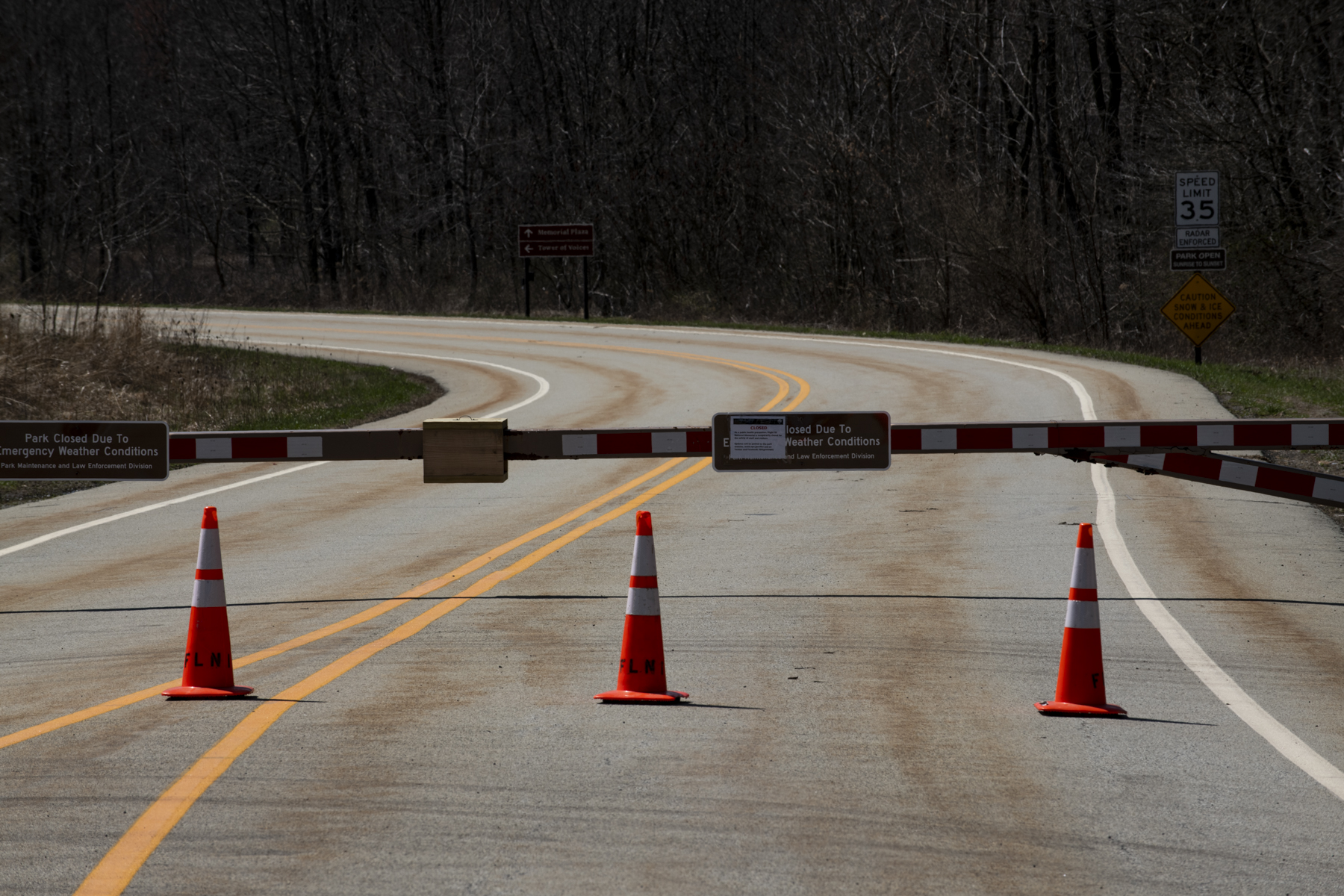SHANKSVILLE, Pennsylvania — Standing at the entrance to the Flight 93 National Memorial in Somerset County, the midmorning sky was doing what it always does in the Allegheny Mountains, shifting rapidly from clear blue with white, puffy clouds to a dark and ominous grayness that swiftly shifts the temperature and the mood.
The wind howled easily in this range, part of the seemingly infinite Appalachian Mountains. It rattled the gate locking visitors out of the memorial that draws thousands of people every year to honor, remember, and see firsthand where that final plane, calculated to target the Capitol on Sept. 11, came down on an old strip mine.
In the months after the plane went down, a temporary memorial sprung up out of a spontaneous outpouring of grief from people from around the world who initially brought flowers and notes after the crash. The outpouring never stopped, and the flowers became tokens of faith and love, from rosary beads to pennies and badges, patches, and ball caps from members of the military, to local and far-ranging fire departments and police departments. The stuffed animals from little children were always the most poignant. That they were willing to part with something they were attached to emotionally is a selflessness and an empathy we should all still pause to consider.

Stephen Clark, the superintendent of the National Parks of Western Pennsylvania, which includes this park as well as Johnstown Flood National Memorial, Allegheny Portage Railroad National Historic Site, and Fort Necessity National Battlefield, said these particular parks mark extraordinary moments in our history.
For Clark, the Flight 93 memorial is hallowed ground, which made it even harder for him to close it because he knows people would want to be here to reflect during the coronavirus pandemic. “It pains me to do that, but we will reopen just as soon as, as a community, we believe it’s safe to do so.”
It’s an answer that raises the question: How will we memorialize the current moment in history for generations after us to understand?
When the Spanish flu swept the world in 1918, the pandemic took the lives of an estimated 50 million people worldwide, with about 675,000 dying in the United States. Yet only a handful of monuments mark that moment, such as the Camp Merritt Memorial in New Jersey or the Vermont Spanish Flu Memorial in the Hope Cemetery in Barre, Vermont.
In the days since the first case of COVID-19 was confirmed here, over 53,000 people across the country have died. Yet so many unknowns remain.
Will it get worse? Will it get better? How do we adapt, manage, and live from this time forward? Will we ever shake hands again? Or hug again? Will we have to tell future generations we used to be something else?
How will we memorialize the heroes, the men and women on the front lines of healthcare, or the folks who are making sure our food is picked, milked, grown, or slaughtered? What about the convoy of truckers risking exposure who pick up and deliver whatever they can to whoever needs it? Or the volunteers at homeless shelters? Or the diners that are barely making their mortgages but are making sure at-risk children or vulnerable families in their cities or villages are fed every day?
How should we honor the victims? How they died, often alone, with no one to hold their hand or sing to them their favorite melody or stroke their arms as they crossed over, as they ached to see and be held by their families or hoped for the spiritual last rites to give them peace.
What of the other casualties, such as with the economic collapse that has shuttered businesses small and large, or the churches, newspapers, schools, and universities that will never open again?
There’s a domino effect in many communities that will now wipe them out for generations, or forever.
Thirty-one miles north at the Johnstown Flood National Memorial stands an equally compelling memorial that was built to remind people of the devastating tragedy there in 1889 that took the lives of over 2,200 western Pennsylvanians when the South Fork Dam burst and roared like thunder as it sent 20 million tons of water crashing down toward the city.
The wave of water was 60 feet high and carried with it a vast torrent of debris that included trees, barbed wire, thick mud, and chunks of buildings that crushed or smothered most of the victims.
We memorialized it and mark it because those details remind us not just of lives lost but also of our mistakes.
Forty miles south of here is Fort Necessity, the only battle that George Washington ever surrendered that marks the beginning of the French and Indian War, which ultimately led to the American Revolution.
The question is not whether we should mark this moment, but how. Not through the lens of politics but through what happened and what we did in the moment so that the following generations will understand who we were.

